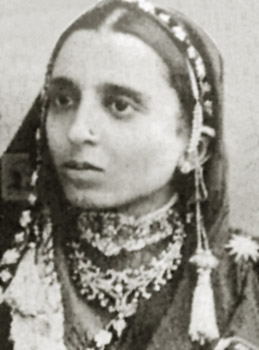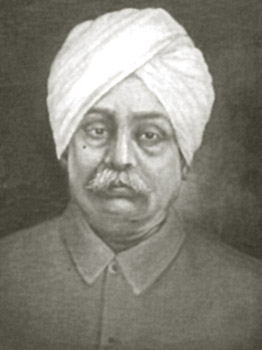 Women in the Civil Disobedience Movement in North Bengal joined in large numbers and were active participating members of the public. In North India women from Allahabad, Lucknow, Delhi and Lahore joined public demonstrations and shocked a public unused to seeing respectable women in the streets without veils. In these northern cities demonstrations occasionally attracted as many as 1,000 women, but most of them were much smaller. They were dramatic events because of their unusual quality rather than their size. The leadership for these movements came from a few families, such as the Nehrus and the Zutshis, and most demonstrators came from schools and colleges. Unlike other parts of the country, women`s organizations were neither the training ground nor recruiting stations for politically active women.
Women in the Civil Disobedience Movement in North Bengal joined in large numbers and were active participating members of the public. In North India women from Allahabad, Lucknow, Delhi and Lahore joined public demonstrations and shocked a public unused to seeing respectable women in the streets without veils. In these northern cities demonstrations occasionally attracted as many as 1,000 women, but most of them were much smaller. They were dramatic events because of their unusual quality rather than their size. The leadership for these movements came from a few families, such as the Nehrus and the Zutshis, and most demonstrators came from schools and colleges. Unlike other parts of the country, women`s organizations were neither the training ground nor recruiting stations for politically active women.
In Allahabad women from the Nehru family were important leaders. They made public speeches and went from door to door urging women to join the movement. Swarup Rani Nehru, Jawaharlal Nehru`s old and frail mother, emerged from a lifetime in the Zenana to walk through the streets in khaddar. Kamala Nehru, Jawaharlal`s wife, was constantly on the move at this time, demonstrating in Allahabad, speaking in Lucknow, travelling to Mumbai, and taking a more active role than her health had previously allowed. Her message was also direct- all must join, take the vow of Swadeshi, and wear khaddar. If women united, the rebellion could never be crushed.
 In Lahore demonstrations against the Simon Commission were marked by violence. The police lathi-charged the demonstrators and struck Lala Lajpat Rai, the great patriot of the Punjab, who died a few months later from his injuries. When Congress met in Lahore in 1929, Sardar Bhagat Singh (later hanged for revolutionary activities) organized the Lahore Students` Union. Lado Rani Zutshi, the wife of Motilal Nehru`s nephew, and three of her daughters, Manmohini, Shyama and Janak, led the movement in Lahore.
In Lahore demonstrations against the Simon Commission were marked by violence. The police lathi-charged the demonstrators and struck Lala Lajpat Rai, the great patriot of the Punjab, who died a few months later from his injuries. When Congress met in Lahore in 1929, Sardar Bhagat Singh (later hanged for revolutionary activities) organized the Lahore Students` Union. Lado Rani Zutshi, the wife of Motilal Nehru`s nephew, and three of her daughters, Manmohini, Shyama and Janak, led the movement in Lahore.
Thus the atmosphere was already charged with patriotic fervour when the announcement of civil disobedience gave these young people a focus. Speaking to students Jawaharlal suggested they go to the banks of the Ravi River and symbolically "make salt" and then concentrate on picketing foreign cloth and liquor shops.
In Delhi, Satyavati Devi, the granddaughter of Swami Shraddhanand, became one of the leaders of the Movement. When Satyavati Devi spoke to women, she reminded them of her lineage and urged them to join her in making personal sacrifices for the nation. Satyavati Devi urged women to take the field because foreign domination was unbearable. Seeing her inflammatory speeches and judging her as a potential threat the authorities made a fast move. They arrested and imprisoned Satyavati Devi, released her, re-arrested her, and finally sentenced her to two years imprisonment in 1932.
Women`s demonstrations in Delhi had a great impact on the men who witnessed them. The government`s confidential records include detailed reports of how women`s activities brought men into the movement. On one occasion Delhi women, dressed in red saris, blocked access to the courts. They were surrounded by male supporters who acted as a protective shield. The women were steadfast in the face of police attacks and astounded everyone with their bravery.
The Movement in the North involved women from different spheres of life, both the elite as well as the women without any education. Women leaders wanted to mobilize their less sophisticated sisters for political action and for this purpose they actively involved them in the various political movements of the nation without concentrating on the feminist issue at this point in time.



















